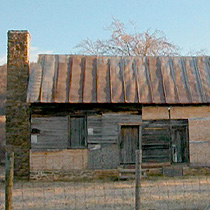2007年VOA标准英语-National Trust Seeks to Preserve Endangered His(在线收听)
Washington, D.C.
20 June 2007
The National Trust for Historic Preservation in Washington, D.C. works to protect historic sites in the United States. Each year the private group identifies America's most endangered places. This year the list ranges from buildings to scenic areas. VOA's Deborah Block has more.
The list includes a 19th century waterfront in New York threatened for demolition. Another is an early American trading route in New Mexico where a nearby spacecraft launching site is planned.

The list consists of sites with historical importance
Some are beautiful places, like the Pinon Canyon in Colorado, or a famous road that spans the U.S. where unique hotels from the past century are being torn down.
Richard Moe is the president of the National Trust for Historic Preservation. "All kinds of historic places face threats that range from short-sited public policy, to demolition, to the ravages of time, weather and neglect. These places are unique and they're irreplaceable and literally tell the story of America," he says.
During World War Two, thousands of Japanese-Americans were interned at relocation camps, including the Minidoka Center in Idaho. Today, what little remains of that camp is in danger of disappearing.
A sacred Native American structure, called a roundhouse, is also in jeopardy. The Kashia Pomo tribe in California use it for religious and cultural events. Spokesman Reno Franklin says funding is needed to protect the structure.
"We have the oldest one in the United States sitting on our reservation,” explains Pomo. “And at this point, the roundhouse and the area around it -- an area that we are planning on designating as a Kashia historic district -- is threatened. It's being threatened by looters. It's being threatened by vandalism."
Also at risk is a 19th century house in Boston, once owned by a famous American architect. And a 1925 racetrack in Florida may be gone soon if developers continue their plans to tear it down and build office space.
The preservation group says while some structures need to be saved, others should never be erected. Seven states in the eastern part of the country are trying to stop huge electric transmission lines that they say will scar their historic landscapes.
Christopher Miller is president of the conservation group Piedmont Environmental Council in Virginia.
"The areas that are being targeted are the ones that are being preserved. Utilities are looking for places where there are fewer people and they tend to be attracted to areas that have been set aside in parks, battlefield areas and historic landmarks," Miller says.
By bringing attention to endangered historical sites, the National Trust for Historic Preservation says it has helped save half of them over the past 20 years.